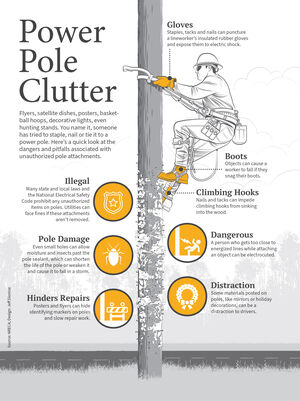County continues to evaluate options for future health care needs
June 2, 2017
Carter County is assessing the needs and evaluating options to meet future health care needs of the community. The goal is to select the option for Dahl Memorial Hospital that provides the best value considering a balance between facility needs and cost.
Slate Architecture has been selected to review the Facility Conditions Assessment and Feasibility Study that were completed in 2016. Using this information and additional site assessments, a Preliminary Architectural Report (PAR) will be finalized in the summer of 2017. The report will document the needs, explain the options available, and recommend a preferred alternative. Carter County has existing funds available for this project. However, the preferred alternative will be presented to the public in the form of a bond to provide additional funding needed for the project and confirm support for spending existing funds. The PAR prepared by Slate Architecture will include an opinion of probable cost that will be used as the basis for procuring funds.
Understanding and assessing the health care needs of Carter County for the PAR started by meeting with Dahl Memorial Hospital staff, board of directors, and the commissioners on January 16 and 17. On February 28, Slate Architecture met with the hospital and commission to present an approach to the project.
Three public meetings were held to provide information to community members of Carter County and obtain public input to guide the decision making process. The meetings were held in Ekalaka on February 28, and in Boyes and Alzada on March 16. The public meetings were very well attended with a combined total of 100 names on all sign-in sheets.
In order to understand the overall needs, the facility deficiencies were investigated by the design team. Operational and health care service needs were provided by the staff and public input was obtained to fully understand the community's views on needs, overall health care use, and desire to fund improvements to the facility.
Facility Deficiencies identified by the design team's site visit includes:
• Drainage problems with the sewer, especially in the older section of the hospital. Also, overall service connect to the city main has a history of backing up.
• Existing electrical system is not adequate for current equipment needs.
• Asbestos material does exist in the facility.
• Heat system has become a maintenance concern; especially the boiler and the controls of heat to individual portions of the hospital which are currently manually controlled.
• Bathrooms are small and do not allow for proper equipment to transfer patients to/from bathroom facilities. Without proper equipment, manual transfers are required which results in injury concerns for both the patient and staff. Manual transfers reduce the options for patients to be more independent.
• There is a lack of adequate space to provide privacy in labs or options to expand service such as pharmacy, physical therapy, and occupational therapy. Without additional services, local residents are required to travel to obtain needed services.
• The existing facility does not meet current American Disability Act (ADA) access requirements. However, practical methods to serve patients are currently being used to best serve patient's needs. A new or renovated facility will need to be designed with current ADA requirements in mind.
• The original hospital that was constructed in 1941 was determined to have deficiencies that will not allow renovation.
• The hospital addition that was constructed in 1956 and the nursing home addition that was constructed in 1967 have service life and value that will considered in options to renovate.
Operational and services provided by the hospital include:
• Critical access hospital providing 25 beds. Approximately 20-22 beds are used for long-term health care and 3-5 beds are reserved for acute care. Health care services are provided 24/7.
• Approximately 4000 labs were performed in this facility in 2016.
• Over 1400 clinic visits occurred in 2016.
• Approximately 180 emergency room visits occurred in 2016.
• The hospital currently provides about 75 acute care days with a history of approximately 100 "in patient" days per year. "The Golden Hour" was discussed, regarding how critical access hospitals do provide care for rural communities in order to stabilize and transfer patients to larger facilities. Without the immediate care in rural communities, the risk of death and permanent injuries are increased.
• Medicare, Medicaid and individual patient funds provide substantial revenue for the hospital. However, funds to operate Dahl Memorial Hospital are supplemented by county funds. Additional county funds come from a mill levy passed by county residents and general funds.
• Operational needs are challenged by struggles to recruit and retain health care providers. The most significant challenge currently is efforts to find nurses.
Public input on needs, uses, and the desire to fund hospital improvements include:
• It is understood that the location of the facility results in more use by the northern portion of Carter County versus the southern portion. The south end of the county is located closer to health care facilitates in South Dakota. This does present a challenge in decisions made for an overall county facility.
• Questions and discussions by the public included past use, current needs, and comparisons with other facilities surrounding Carter County.
• It was very clear that a majority of the residents supported a facility for long-term care in Carter County.
• In addition to long-term care, a medical facility to provide critical care was also supported by the majority of the residents.
• The most divisive discussions were in regards to the use and need for in-patient and out-patient services including a pharmacy, physical therapy, occupational therapy, labs, and other day-to-day health care needs.
• Dahl Memorial Hospital staff and management have a strong desire and commitment to providing quality and sustainable health care services to rural communities in Carter County. The deficiencies of the existing facility and challenges staff encounter with the existing facility were made very clear even though they make the best out of what they currently have.
• The majority of county residents support improvements to the health care facility. However, strong emphasis has been put on a facility that is right-sized with responsible spending in mind. Although some residents support a new facility and others desire simply using the facility without any improvements, the majority of the residents desired exhausting an option involving using as much of the old facility as possible and limiting any new improvements to focus on the needs - nothing higher priced or larger than necessary. "BE PRACTICAL" was a strong message heard by the majority of county residents at the public meetings.
In summary, based on a majority of the feedback received, the need to keep a health care facility in Carter County was supported. The need for improving the facility is also supported by the majority of residents. However, a strong emphasis was placed on the best value and "doing what is right;" Specifically, getting the most out of the dollar spent, understanding the needs, and filtering out any wants. Public comment encouraged taking a fiscally responsible approach to the project.
Two additional public meetings will be held prior to finalizing an option to present to the voters of Carter County; one in Ekalaka at the Events Center at 209 W Speelmon, on Monday, June 12, 2017 at 7:00 p.m. and a second public meeting at Little Jaded, 13706 Highway 212, on Tuesday, June 13, 2017 at 7:00 p.m. All options will be briefly discussed regarding the "do minimal" option, "renovations to the existing facility" option, and "new replacement facility ."
The preferred alternative that will be discussed in detail involves demolishing a portion of the existing facility and adding an addition. This option aligns well with input received from the community.
Three schematic drawings, including one option for new construction and two options for renovations/addition to the existing facilities, will be discussed in detail at the upcoming public meetings and are available for public viewing prior to the meeting.
Please contact the Clerk and Recorder at (406)775-8749 to obtain the floor plan layouts. In addition to the opportunity to ask questions and provide input at the public meeting, please send written comments via letters directly to the county courthouse at P.O. Box 315, Ekalaka, MT 59324 or e-mail the Clerk and Recorder at [email protected].












Reader Comments(0)